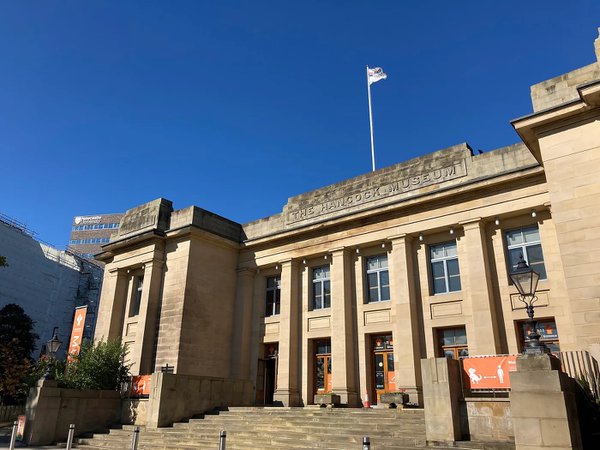What is the difference between decolonisation and repatriation?
Andrew Parkin, Keeper of Archaeology, Great North Museum: Hancock
This post expands on the earlier article Decolonising the Museum, which we’d recommend reading first.

The Great North Museum: Hancock in Newcastle city centre.
To understand decolonisation we need to understand what colonisation is. Colonisation is when a country establishes control over another country or territory and its people, and exploits their resources.
Decolonisation is the opposite of this. It is a term that is used to describe a process by which countries, such as Britain, have sought to undo colonialism by giving up their control over parts of the world they had formerly ruled.
More recently the term has been adopted by museums to describe how they could acknowledge that the origins of their collections might be connected to the acts of colonisation of other countries, and how they ensure these stories are not overlooked. Part of the problem with the term ‘decolonisation’ is that there is no agreed definition as to what it means for museums and it can often be misrepresented or misunderstood.
For the Great North Museum, we are keen to understand the origins of our collections, particularly those that were collected during the time of the British Empire, and tell their stories in an accurate and balanced way. We believe it is important to expand our perspectives beyond those of the dominant western point of view and represent the views of all audiences, including the source communities from where parts of our collections originated. We want the museum to acknowledge past injustices and be as open as possible about where our collections have come from. This will take time but we are committed to making change.
One of the main reasons we to want to decolonise the museum is to make it more welcoming to as wide a group of people as possible. Ideally, all our visitors should be able to see themselves represented and acknowledged in our galleries; the Museum should be more democratic. We can work towards achieving this by changing how we interpret our collections, especially by taking into account the opinions of source communities on objects they are familiar with.
We can even change our perspective on objects from Britain. For example, this tombstone from Housesteads on Hadrian’s Wall, portraying a Syrian archer, has interesting stories to tell about the arrival of people from outside of Britain in the Roman period. This is something we have yet to do in a more obvious way in our Hadrian’s Wall gallery as we concentrate on traditional perspectives of the Roman occupation of Britain. Here we could use a decolonising approach to tell a very different story about Hadrian’s Wall and the Roman Empire.
Repatriation is an important issue that is part of an approach to decolonising a museum but means something very specific. This is when objects that were historically taken without permission, or have special significance, are returned to their country of origin. It is something that the Museum has already done; in 2006 we returned the human remains of three Australian Aboriginals to Australia. Here there was a strong case to reunite these individuals with the communities they came from and make amends for a past wrong.
The idea of repatriation does not mean that the Museum is going to send everything back to its country of origin. The majority of the items in the collections were collected with no issue. However in many cases, because it happened so long ago, we do not have good records of how objects came into the collection and we have more research to do. This means that there are potentially items that were looted or given as gifts under pressure, and these may well then be open to a proposal for repatriation.
In these instances the Museum will work collaboratively with whoever is making the proposal to resolve the issue in an ethical and legal way. We do not want to ignore past injustices and will work positively to put them right, and at the same time hopefully establish a positive relationship with a source community.


